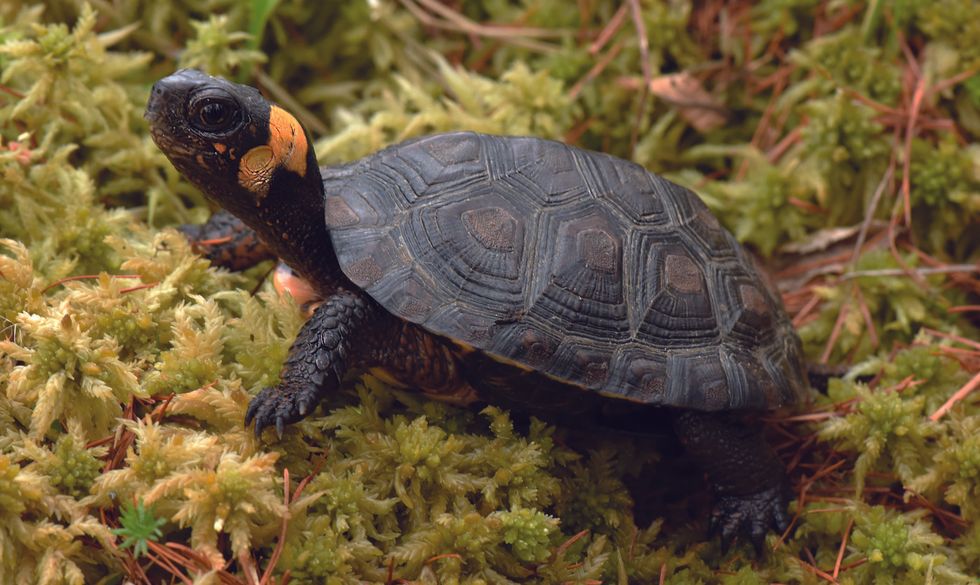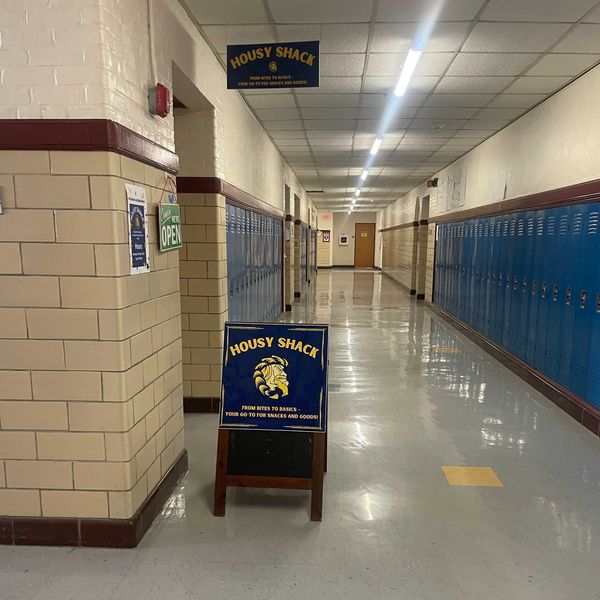Newts, Salamanders and the Dangers of Human Over-Development

Photo from Conservation of Reptiles and Amphibians in Connecticut

Anyone who is either a careful reader of The Lakeville Journal or an attentive student of life in the Northwest Corner of Connecticut has probably heard the name Michael Klemens before — perhaps as an expert on the elusive bog turtle, perhaps as the strict-but-fair chairman of the Salisbury, Conn., Planning and Zoning Commission. He has also been a member of Connecticut’s Siting Council, which has final say on the location of monoliths such as cell towers and wind turbines. Before coming to Connecticut, he was the director of program development for the Wildlife Conservation Society, which operates New York’s Bronx Zoo.
There is much that we know about Michael Klemens but much more that most of us have yet to learn — including the depth of his knowledge of herpetology.
Klemens is a polymath who knows a great deal about a lot of things, but probably the topic he knows most about is the study of reptiles and amphibians.
There have been times in the past decade or so when Klemens has been called to offer an expert opinion on the possible presence of bog turtles (you can see one in the photo above) in an area where someone wants to build something. Opponents of a building project will often cite the presence of the federally protected and adorable reptiles as a reason why building can’t continue. The bog turtle is as powerful a deterrent to construction in this part of the world as archaeological remains might be in another region.
But Klemens knows about much more than just the furtive lives led by the tiny turtles. He has written books, studies and management plans on these and other creatures for the U.S. Fish and Wildlife Service and other agencies — including, now, the Connecticut Department of Energy and Environmental Protection, which has just released a 305-page study of the “Conservation of Reptiles and Amphibians in Connecticut.”
Klemens is the lead author on a team that also includes Hank J. Gruner, Dennis P. Quinn and Eric R. Davison.
While the topic might sound specialized, and it is, the main message of the book is one that impacts us all. In his decades of study, Klemens discovered that, more than anyone had realized before, human activity and building has a startling impact on the health of all creatures small (turtles, snakes, frogs) and great (humans). What’s bad for the animals that creep through our vernal pools and fens is bad for the “greater” animals that build houses and roads that destroy breeding grounds, migration patterns and habitats.
While acting as a catalogue of every species in the state (salamanders, newts, skinks and snakes, turtles, frogs and more), the book also points out the dangers to their habitats and suggests ways in which humans can not only reduce their negative impacts but perhaps even be helpful to the creatures that contribute so much to the beauty of this part of the world.
“Since human activities so profoundly affect the natural world, why can’t the human intelligence and technology which drive destructive trends in land use, be better applied or retooled through education and information to create human landscapes that are more in harmony with the natural world?” he asks in his introduction to the book, which was published in late 2021.
“In my work, I often describe the problems that have occurred because I believe that to change how society deals with its responsibilities to the natural world it must first come to understand the problems that past land-use patterns and practices have created. Only from the confidence that is engendered by that understanding can the impetus to create better models of sustainability and stewardship find solid footing.”
The book can be ordered online from the Department of Energy and Environmental Protection bookstore, https://www.ctdeepstore.com/Conservation-of-Amphibians-and-Reptiles-in-C.... The cost is $54.95 and money from sales of the book help protect amphibians and reptiles. The lessons presented in the book are also relevant, of course, to areas outside Connecticut.
The Community Closet at HVRHS is open for students to take clothes for any reason during the school day.
What started with one unexpected donation of clothes has grown into a quietly impactful resource for all students at HVRHS: the Community Closet. Now located in a spacious area above the cafeteria, the closet offers free clothing to any student for any reason.
The idea began a few years ago when a community member reached out to the former superintendent wondering if anyone at the school could benefit from used clothing that would otherwise go to waste. The superintendent then got in contact with Rachel Novak, the school social worker. “Once I had all those bags of clothes in my room, I was like, ‘I should put this in a space,’” Novak said. Her simple idea eventually became a full-sized closet accessible to all students.
From the beginning, Novak envisioned the closet as an inclusive space. “It’s open to anybody, it’s not just based on economic needs,” she said. Sustainability also plays a role. “Thinking about the environment, some students like to thrift and just get clothes that way,” Novak said.
After the initial donation, contributions continued to grow. “I reached out to our staff members and faculty,” Novak said. The most consistent donations come from the faculty at HVRHS and a few community members who learned about the closet. Finding teenage-appropriate clothes has been a challenge. “I get a lot of donations that are nice, but I don’t think teenagers would want to wear them,” Novak said.
Another ongoing obstacle has been awareness. Many students don’t know the closet exists at all. “That’s been the hard part,” Novak said. “Getting it out to the wider community of the school.” Novak is looking for students and staff to spread the word. “It helps because our school nurse knows and other faculty members,” she said. “When they know a student needs something, they just bring them up.”
Looking ahead, she hopes to promote the space more actively. “When we come back from this break, I do plan to … get fliers and all that up and going,” Novak said. There may even be an upcoming expansion — she has discussed the possibility of turning part of the area into a food pantry. “That would be more of a need-based system for students,” she said. “But right now, promoting it is where I’m at.”
The Community Closet is well-stocked currently. “Just because of the amount of clothes I have, I’m not accepting any more donations until I clear some stuff out,” Novak said. She is still willing to make room for more fashionable, teen-friendly items donated by students. “That way I’ll have more teenager approved clothes.”
Above all, she wants students to know that no one is limited to using the space. “Sometimes there’s a stigma around it … like, ‘I don’t need help. I don’t want to take away from anybody else that may need it,’” Novak said. Due to the amount of clothes, students should feel welcome to use the closet for any reason. Some students even grab items last minute for sports and activities. “It’s important for kids to know it’s for everyone.”
Whether a student wants to thrift clothes sustainably, forgot to pack clothes for an after-school practice, or is in need of a new outfit, the Community Closet is a resource for all.
Sophomore Eliana Lang enjoys her Housy Shack cookie.
Now in its second year, the Housy Shack is a hit among students. The special education department-run store that sells warm cookies, drinks and other snacks to students and teachers draws people to a room in the back hallway every time it’s open.
The smell of warm cookies welcomes visitors to the store with snacks, drinks and even Housy merchandise for sale. The cookies are definitely the favorite, sometimes lines go out the door to get one before they sell out.
The cookies are so popular that the store had to increase prices from 50 cents to a dollar and implement a four cookie per person maximum. The Shack sells about 40-100 cookies per day and has about 20-60 HVRHS customers visiting per day.
Julie Browning and Heather Strid, two of the HVRHS faculty members that help run the Shack, said their goal was to create real-world job experiences as well as real-world shopping experiences for students at HVRHS. “Learning the skills to work in the world can be taught in a classroom, but the lessons are more meaningful and valuable when they are applied in real work situations, which is what we create through the school store,” Browning said.
The original purpose for the store seems to be working, as several students are learning important skills. Students said the store taught them skills like counting money, checking inventory and cleanliness along with social skills and customer service that could help in the professional world after high school.

As the store quickly became a hit, organizers were faced with the challenge of finding funding. “When we started planning to start the school store two years ago we needed money to buy equipment, supplies and food to start it up but were not sure how to get it,” Browning said. “Mrs. Strid came up with the idea of applying for a grant from the 21st Century Fund to help us get started and they were so generous.” That grant has been crucial to the success and growth of the school store.
Not only does the Housy Shack benefit the special education department, students said it fosters a sense of community throughout the school. “School store cookies are my favorite thing ever. They brighten up my day,” said Eliana Lang, a sophomore at HVRHS. Dayana, one of the student staffers at the Housy Shack, said her favorite part of working in the school store is when students come in to make purchases. She enjoys talking to them and ringing up their orders on the cash register. The Housy Shack brings people together and offers the opportunity for students to connect with each other.
As the school year continues, the members of the school store look forward to expanding their inventory by creating and selling a variety of Housy merchandise — t-shirts, sweatshirts, water bottles, and more. “I have had several students put in requests for certain hats, key chains, etc. … so there will be more of that to come,” Browning said. Last school year, profits were all invested back into the school store. “This year we are hoping to make more of a profit and will look to use the money that we make for field trips, outings as well as opportunities to donate and give back to the community,” Browning said. They also would like to use the school store to fundraise for other causes. “Right now we are collecting donations for The Little Guild Animal Shelter, so if anyone has pet supplies they would like to donate please drop them off in exchange for a cookie,” Browning said.